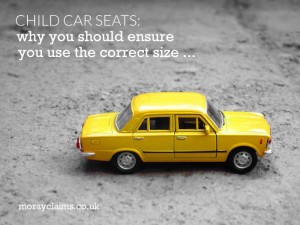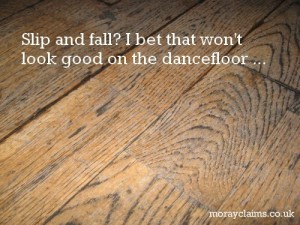Hitting a detonator with a hammer to see what happens. Does that (bang) sound to you like a good idea? There are some situations where an injured person’s own conduct seems quite foolhardy in the circumstances and yet they have still been able to get compensation for their losses. In some situations, though, the claimant’s own conduct can be seen as such an overwhelming cause of their injury that it is taken to be the only cause having any legal effect – and the injured person in that type of case is often said to be ‘the author of their own injury’. A finding of that nature means your claim fails. In a Scottish case reported in 1957 (Donaghy –v- National Coal Board), a young miner sued his employers for damages for injuries which he suffered when he exploded a detonator by striking it with a hammer. He alleged that he had done this in the belief that, if struck sharply, a detonator would do no more than make a harmless noise. This claim did not succeed. The judge in Continue Reading
Accidents at Work – Loss of Earnings
Where you have been injured in an accident, a common consequence is that you will not be fit for work for a period of time. We often find that our personal injury clients who are victims of accidents in the workplace - in situations where it was the employer's breach of duty that caused the accident - only decide to make a claim at all because during their absence they receive wages at a reduced rate. It seems unfair that not only have you been injured due to your employer's fault but you then also suffer a personal / family financial crisis. Some employers have a company sick pay scheme, usually set out in the employee's written terms and conditions. If you have the benefit of a scheme like this, it will often mean you getting full pay for some weeks or months, then half pay, eventually reducing to nil. If you are injured and there is no employer's scheme in place, you may still be eligible for statutory sick pay (SSP), the standard weekly rate for which is currently £85.85 Continue Reading
Accidents on Rural Roads
RoSPA - the Royal Society for the Prevention of Accidents - published a policy paper (August 2010) addressing the safety of rural roads, which could be of interest to you if you have suffered personal injury on the roads in Moray or elsewhere in the North of Scotland. The publication points out that rural roads have not seen as rapid a fall in accident rates as urban areas in recent years. Rural roads still account for over 70% of fatal road accidents. RoSPA is of the view that simply managing the road environment itself can help to reduce the number of incidents where the road is a primary or indirect cause of the accident. According to RoSPA, some useful options are to alter the perceived road width with markings or roadside islands or by changing or removing the centre line. "Forgiving roadsides" can also help reduce the risk and severity of injury sustained if a vehicle leaves the main carriageway for a short period. If you have been injured in a road accident then Continue Reading
Ladder Accidents
[NOTE: This article also forms the basis of a podcast episode - "Ladder Safety Hazards" - available on this website. If you prefer to listen to this content rather than read it, please go to the podcast audio] Ladders are surprisingly dangerous. The introduction to the Health and Safety Executive’s (HSE) publication “Safe Use of Ladders and Stepladders – An Employer’s Guide” (link to PDF - download begins immediately) confirms that: “A third of all reported fall-from-height incidents involve ladders and stepladders. On average this accounts for 14 deaths and 1200 major injuries to workers each year. Many of these injuries are caused by inappropriate or incorrect use of the equipment.” There is a reported instance of someone suffering a fatal injury after losing their footing on the second rung of a ladder, falling backwards and hitting their head on the floor. Unfortunately, judges have a tendency to regard ladder use as requiring nothing more than common sense. As a Continue Reading
Child car seats: another reason to make sure it’s the right one
It’s bad enough to be involved in a road traffic accident in which someone is injured ... ... but it is even worse if that person is a young child. As a parent, you will find it difficult to come to terms with an injury to your child even if the accident was not your fault. What follows is the facts of a case from 2012 where a mother – who was driving the vehicle in which her injured child was a passenger – was not responsible for the accident at all but was still found to be partly responsible for her child’s injury. In this accident, there was a collision between two cars near Wrexham, North Wales. The driver of the other car lost control of his vehicle and it crossed to the wrong side of the road. There was nothing Louise Williams could do to avoid the crash. The driver of the other car was killed. Ms Williams’ daughter, Emma, aged three, was seriously injured. In the back of Ms Williams’ car, there were two child seats. One was a child seat fitted with a harness (for Continue Reading
Your future accident at work claim at risk
In a press release on 13 November 2012, the Association of Personal Injury Lawyers has highlighted a proposed change to Health and Safety at Work that threatens to return Scotland to Victorian times. The amendment of Section 47 of the Health and Safety at Work Act 1974 would alter laws that have been in place since the end of the 19th century. As the law stands, if a worker is injured and he or she can show the employer is in breach of health and safety regulations, there is a right to claim compensation. The proposed changes will mean an injured person would no longer be able to rely on this right but would have to start from square one and prove that negligence had occurred. It seems inevitable that this change will mean employers’ liability cases becoming more complex - and so more expensive to run. Many legitimate claims could be denied redress in future, leaving people injured at work having to rely on their families and the State to support them rather than the insurers of Continue Reading
Whiplash injuries
Whiplash claims now make up about 70 per cent of all motor accident personal injury claims. Whiplash injuries are caused by the neck and head being thrown suddenly backward then forward during the accident. The neck and head are forced beyond their normal range of movement and this results in damage to soft tissue and pain. Most people make a full recovery from this type of injury and, where neck and back symptoms last perhaps three to six months, courts will award damages of between £1,500 and £3,000. Because whiplash does not involve broken bones, there are few objective signs of injury. At the moment, claims for whiplash injuries are under fire from the Westminster government and the insurance industry because there is clear temptation for exaggeration of symptoms by claimants. The House of Commons Transport Select Committee heard evidence in 2011 that the insurance industry loses £2.1 billion per annum to fraudulent claims, whether by “cash for crash” staged accidents or Continue Reading
Slip and fall? I bet that won’t look good on the dancefloor …
Dancefloors can be dangerous places. The combination of spilt drink, variable lighting and alcohol consumption means that falls can easily happen. Broken wrists are the most popular injury in our experience but leg injuries are also common. Claims based on occupiers' liability If you have been injured in this sort of situation, following a slip and fall, it may be possible to make a claim based on Occupiers’ Liability. The occupier – basically whoever has control of the premises – has to take reasonable care to see to it that people are not injured due to the state of the premises – which includes wet floors. Wet surfaces are not necessarily slippery? Unbelievable as it may seem, the courts have actually said that it is not self-evident that a wet surface is “slippery”. If liability for an accident is denied it can be necessary to get an engineer to carry out a slip-resistance test on the surface in question to provide a scientific measure of whether the floor poses a low, Continue Reading


